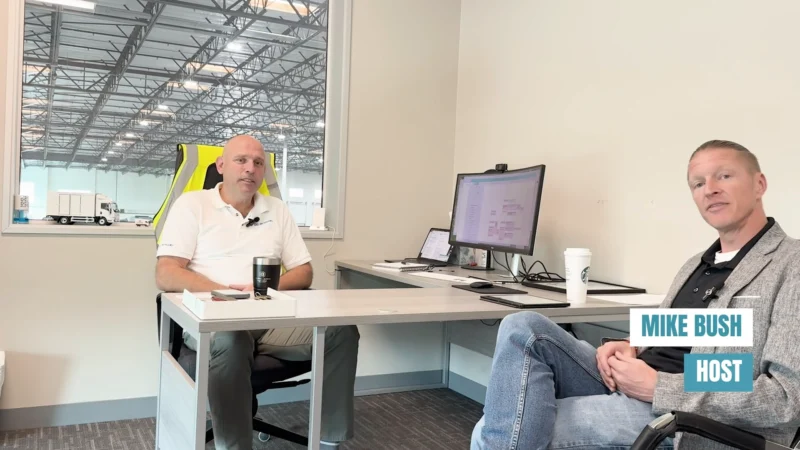Safety of Autonomous Vehicles Will Partially Rely on the Public Embracement of its Technology
Autonomous vehicles are more than just a cool idea. They have the potential to revolutionize our transportation systems by making them safer, more accessible, and more affordable. Cities like Phoenix, where Waymo has set up operations, offer an interesting testing ground for autonomous driving. Yet, the deployment of self-driving vehicles has challenges due to the complexity of urban surroundings. While technology has certainly advanced, sensors are becoming more sophisticated. Furthermore, algorithms are learning rapidly making the road to fully autonomous transportation a long one.
With a series of self-driving vehicle mishaps in San Francisco, safety concerns are at the forefront. Autonomous vehicles demand a cautious approach to ensure safety and functionality, including extensive training and testing in the form of simulations and limited-scope real-world operations. As autonomous vehicles continue to learn from complex urban tapestries, the question isn’t just if they will become a fixture of our cities, but how and when. Companies like Waymo and Cruise are already showing what’s possible, though some experts argue that hiccups are expected and should serve as vital feedback.
To explain this subject further is Ram Pendyala. He serves as a Director and Professor at the School of Sustainable Engineering and the Built Environment at Arizona State University. With a rich academic background in transportation systems, urban planning, and sustainable engineering, Pendyala shared some thoughts into the challenges and possibilities facing autonomous vehicles as they integrate into our complex urban landscapes.
Pendyala’s Thoughts on Autonomous Vehicles
General Optimism and Concerns about Autonomous Vehicles
“This is a very, very timely question. Everybody, this is on everybody’s minds, especially in the transportation profession, as we see these autonomous vehicles being deployed, not only in San Francisco, but in other cities as well. And there’s certainly a certain amount of cautious optimism around these new technologies coming into our transportation ecosystems.”
“On the one hand, there is the promise of enhanced safety because you’re potentially reducing the scope for driver error. There’s also the potential for enhanced accessibility. So perhaps those who don’t have access to a car, other transportation options are mobility disadvantaged or have other mobility limitations. Now have an option to get curb-to-curb, customized transportation on demand by virtue of an autonomous taxi.”
“And by making this autonomous transportation, the hope is that it’ll be more affordable because it’s just the machine. You don’t have to worry about paying a driver, et cetera, et cetera. So there’s a lot of promise here.”
“Our cities are complex systems and the transportation networks are inherently very complex in and of themselves. Once you even drill down from the city-level complexity to the transportation-level complexity. And so it is not surprising that autonomous vehicles have taken much longer than we had originally envisioned and hoped.”
“We expect humans to occasionally make mistakes, but if you really look at the, even the human driving record, it is one that is extremely impressive. And so for autonomous vehicles to reach really that level and exceed that level of performance is quite a high bar.”
Technological Challenges and Progress
“And there is extensive training and learning that needs to happen. And so I will say that I think the technologies are maturing and there’s rapid technological developments that are happening every day as we speak. Sensors are getting better. All of the systems and technologies, algorithms, the artificial intelligence, et cetera, they’re all getting better at a very rapid pace.”
“I think there is hope that we’re very cautiously optimistic, but sometimes that’s why I think deploying in Phoenix was a little more straightforward. It’s a very kind of more friendly, I think, environment for autonomous vehicles to be trained and to navigate.”
“San Francisco is a different story. San Francisco is definitely more complex, more involved, and there is more going on with finer nuances and so on that need to be navigated.”
Company Experiences in Different Environments
“Waymo had a lot more experience. They had a headstart with all that they did in Phoenix. And now you actually have Waymo operating in Tempe, Arizona, right? And downtown Phoenix.”
“I’m not sure if Cruise has had the same richness in terms of the historical experience, navigating city streets and various environments and so on. And so perhaps that’s why they’re having a little more of these, let’s say, deployment hiccups, so to speak.”
Cautions and Considerations for Deployment
“As time goes on, I think these vehicles will become more reliable. You’ll have less and less of these hiccups. We’re already seeing that as time goes on. Now, are they ready for just mass implementation on a large scale? I don’t think so, right?”
“This has to be a slow and steady and gradual rollout. One, to make sure we don’t compromise safety. Second, to make sure they perform well and deliver the kind of autonomous city taxi service that you wanna deliver, the mobility you wanna deliver.”
“And third, to make sure that the public are ready to embrace the technology and navigate the streets together with them in the ecosystem. So really there needs to be a very cautious approach. We just cannot say that they’re ready for mass deployment.”
Training and Real-World Testing
“I would say it is both. So I think that basically these vehicles need to be put through, right? Whatever is the software and the algorithm driving the vehicle, right? Needs to be put through a lot of training through laboratory simulations.”
“These laboratory simulations should essentially create and train this driving system through many different scenarios from the very simple to the very complex. And this needs to be done for the equivalent of perhaps millions of miles because you can do simulations very fast, very quickly.”
“But in addition to that, you then need to make sure that you define an operational design domain, an ODD. That is where this service is gonna operate. Define it very carefully.”
“Be careful, set perhaps more limited scope, geographic scope. And then as the vehicles learn, make sure there’s a lot of real-world training and real-world learning that happens in this operational design domain before deploying purely driverless service.”
“Have a safety driver in place well into the deployment phase. Certainly that’s not economically perhaps very advantageous. You have to pay that safety driver, et cetera, et cetera. But I think that is the safer way to go.”
“And in the long run, I think that’s the more economically successful way to go as well because you’ll be gathering so much data and being able to take all the actions you need to take to make sure the vehicles are foolproof or close to foolproof by the time you really deploy driverless service.”
“I don’t think you can make technology 100% foolproof. That’s perhaps too much of a stretch.”








